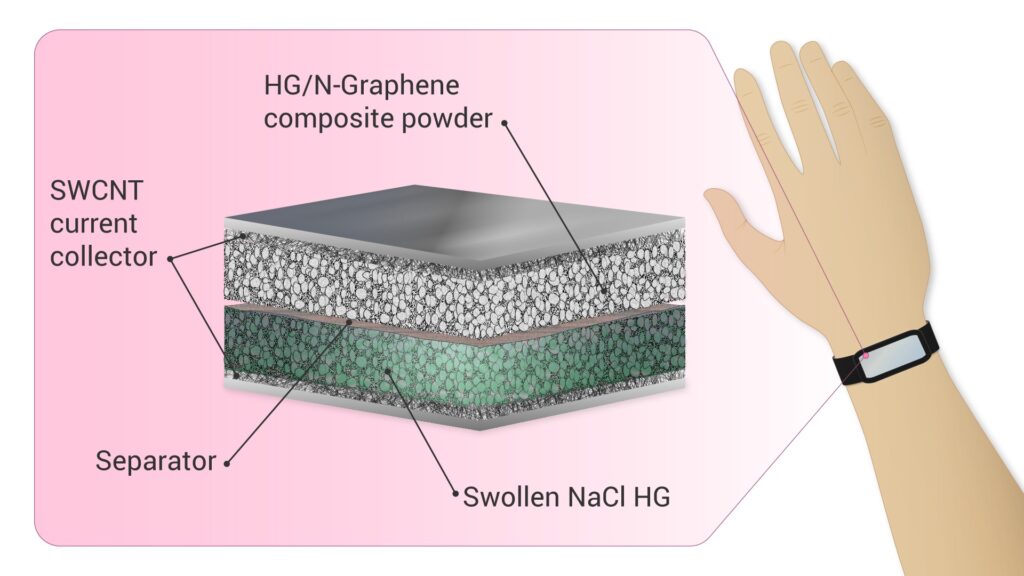Researchers created a high performance, eco-friendly, economical and elastic supercapacitor that can be a strong driver for the development of wearable sensors
Sensor technology is highly dependent on the development of microelectronics. The focus is on capacitors, which require high power density, charge-discharge speed, long life cycles and low costs. A team of researchers has developed a high-performance, cost-effective, environmentally friendly and flexible supercapacitor. The research was developed between the Skolkovo Institute of Science and Technology in Moscow, Aalto University and the Massachosetts Institute of Technology.
The supercapacitor consists of nitrogen-doped graphene electrodes immersed in the hydrogel electrolyte containing NaCl. The structure is inserted between two current collectors containing carbon nanotube films that provide the elasticity. The hydrogel in the supercapacitor provides a compact device with high energy density and allows the use of environmentally friendly electrolytes. The complete results have been published in the Journal of Energy Storage.
“We fabricated a prototype with unchanged performance under the 50% strain after a thousand stretching cycles. To ensure lower cost and better environmental performance, we used a NaCl-based electrolyte. Still the fabrication cost can be lowered down by implementation of 3D printing or other advanced fabrication techniques” says Skoltech professor Albert Nasibulin. The eco-friendly aspect is the NaCl electrolyte, which replaces organic alternatives. Tanja Kallio, professor at Aalto University: “Usually, organic solvents are used to increase the energy density. These are hazardous, not environmentally friendly, and they reduce the power density compared to aqueous electrolytes with higher conductivity“.
